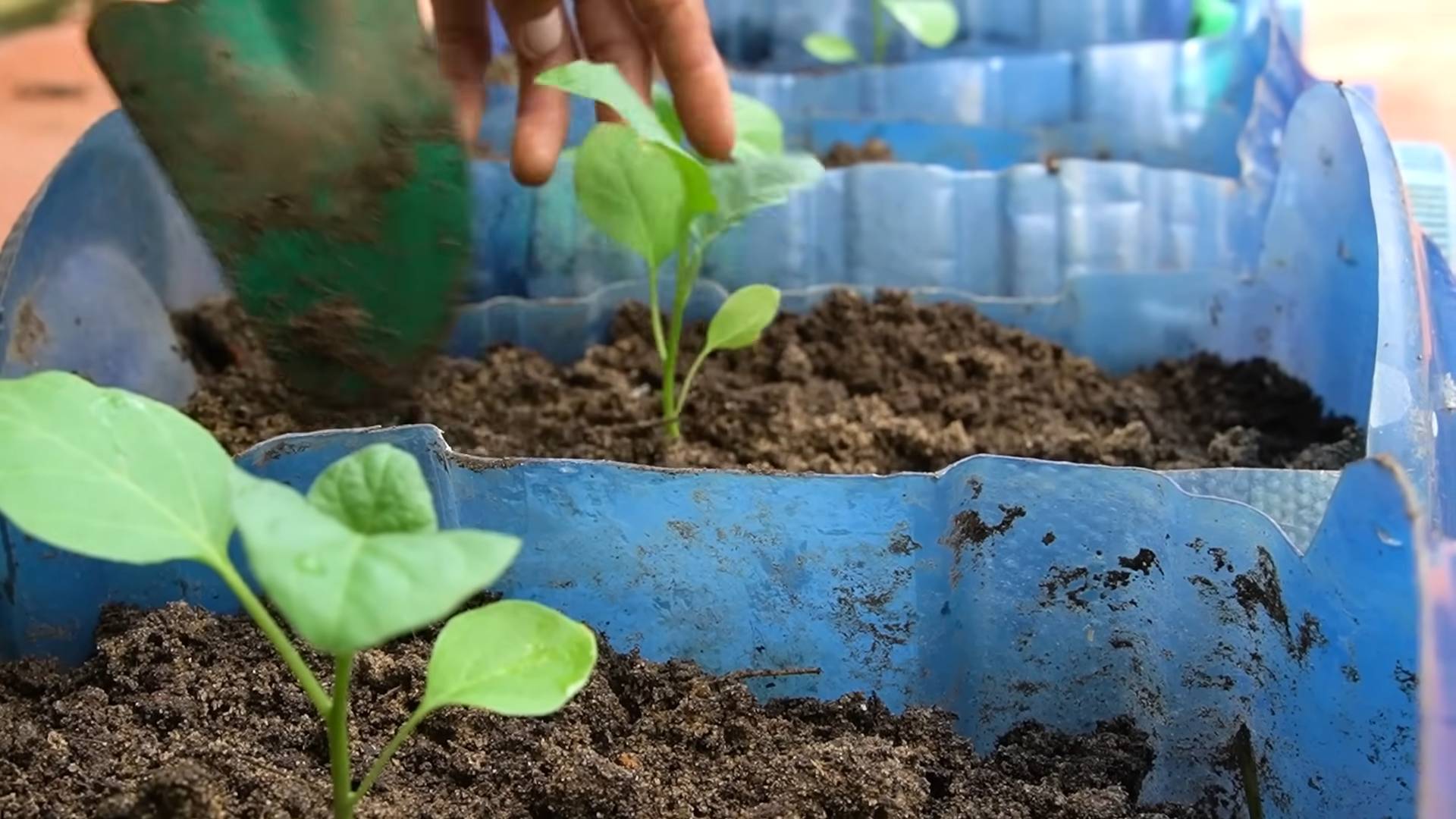Easy Eggplant Recipe Beginners, rejoice! Are you intimidated by the thought of cooking eggplant? Do you envision a bitter, spongy mess instead of a delicious, savory dish? Fear not, because I’m here to guide you through the wonderful world of eggplant cookery with recipes so simple, even the most novice cook can master them.
Eggplant, also known as aubergine in some parts of the world, has a rich history dating back thousands of years. Originating in India, it gradually made its way across the globe, becoming a staple in cuisines from the Mediterranean to Asia. For centuries, it’s been celebrated for its versatility and unique flavor profile, but often misunderstood by beginner cooks.
Why do you need these easy eggplant recipes? Because eggplant is packed with nutrients, incredibly versatile, and can be transformed into a culinary masterpiece with just a few simple tricks. Many people avoid eggplant because they’ve had a bad experience – perhaps it was undercooked, improperly seasoned, or just plain bitter. But with the right techniques, you can unlock the full potential of this amazing vegetable. I’m going to show you how to prepare eggplant perfectly every time, eliminating the bitterness and creating dishes that will impress your family and friends. Get ready to discover your new favorite easy eggplant recipe beginners!

DIY Delicious: My Foolproof Eggplant Parmesan for Beginners
Okay, let’s be honest. Eggplant Parmesan can seem intimidating. All that frying, layering, and baking? But trust me, with this recipe, even if you’ve never cooked an eggplant in your life, you’ll be serving up a restaurant-worthy dish in no time. I’ve broken it down into super simple steps, so grab your apron and let’s get started!
What You’ll Need: The Ingredient Rundown
Before we dive in, let’s make sure we have everything we need. This is crucial for a smooth cooking experience!
* Eggplants: 2 medium-sized eggplants. Look for ones that are firm and have smooth, shiny skin.
* Salt: For drawing out moisture from the eggplant.
* All-Purpose Flour: About 1 cup, for dredging.
* Eggs: 2 large eggs, lightly beaten.
* Breadcrumbs: About 2 cups. I prefer Italian seasoned breadcrumbs, but plain works too! You can add your own Italian seasoning (oregano, basil, parsley, garlic powder) to plain breadcrumbs.
* Grated Parmesan Cheese: About 1 cup, plus extra for topping.
* Grated Mozzarella Cheese: About 2 cups, shredded.
* Olive Oil: For frying the eggplant. You’ll need a good amount.
* Your Favorite Marinara Sauce: About 24-26 ounces. You can use store-bought or homemade. I won’t judge!
* Fresh Basil (Optional): For garnish. Adds a lovely fresh flavor.
Essential Tools of the Trade
Having the right tools makes all the difference. Here’s what I recommend:
* Large Knife: For slicing the eggplant.
* Cutting Board: To protect your countertops.
* Shallow Dishes or Plates: For the breading station.
* Large Skillet or Frying Pan: For frying the eggplant.
* Tongs: For flipping the eggplant slices.
* Baking Dish: A 9×13 inch baking dish works perfectly.
* Paper Towels: For draining the fried eggplant.
* Oven Mitts: Safety first!
Step-by-Step: Making Eggplant Parmesan Magic
Okay, here’s where the fun begins! Follow these steps carefully, and you’ll be amazed at how easy it is.
Phase 1: Preparing the Eggplant
1. Slice the Eggplant: Wash the eggplants thoroughly. Trim off the stem and the bottom. Then, slice the eggplants into 1/4-inch thick rounds. Try to keep the slices as uniform as possible for even cooking.
2. Salt the Eggplant: This is a crucial step! Lay the eggplant slices in a single layer on a large baking sheet or cutting board. Sprinkle generously with salt on both sides. This helps draw out excess moisture, which prevents the eggplant from becoming soggy when fried.
3. Let it Sit: Let the salted eggplant sit for at least 30 minutes, or even up to an hour. You’ll notice beads of moisture forming on the surface.
4. Rinse and Dry: After the salting period, rinse the eggplant slices thoroughly under cold water to remove the excess salt. Then, pat them completely dry with paper towels. This is really important! The drier the eggplant, the better it will brown when fried.
Phase 2: The Breading Station
1. Set Up Your Breading Station: Prepare three shallow dishes or plates. In the first dish, place the all-purpose flour. In the second dish, whisk the eggs. In the third dish, combine the breadcrumbs and grated Parmesan cheese.
2. Dredge in Flour: Take each eggplant slice and dredge it in the flour, making sure to coat it evenly on both sides. Shake off any excess flour.
3. Dip in Egg: Dip the floured eggplant slice into the beaten eggs, ensuring it’s fully coated. Let any excess egg drip off.
4. Coat in Breadcrumbs: Finally, dredge the egg-coated eggplant slice in the breadcrumb mixture, pressing gently to make sure the breadcrumbs adhere well to both sides.
Phase 3: Frying the Eggplant
1. Heat the Oil: Pour about 1/2 inch of olive oil into a large skillet or frying pan. Heat the oil over medium-high heat. You’ll know the oil is ready when a small piece of breadcrumb sizzles and browns quickly when dropped into the oil.
2. Fry the Eggplant: Carefully place the breaded eggplant slices into the hot oil, being careful not to overcrowd the pan. Fry them for about 2-3 minutes per side, or until they are golden brown and crispy.
3. Drain on Paper Towels: Remove the fried eggplant slices from the pan with tongs and place them on a plate lined with paper towels to drain off any excess oil.
Phase 4: Assembling the Eggplant Parmesan
1. Preheat the Oven: Preheat your oven to 375°F (190°C).
2. Layer the Ingredients: Spread a thin layer of marinara sauce on the bottom of your 9×13 inch baking dish.
3. First Layer of Eggplant: Arrange a layer of fried eggplant slices over the sauce, slightly overlapping if necessary.
4. Add Cheese and Sauce: Spread another layer of marinara sauce over the eggplant, followed by a generous sprinkling of mozzarella cheese and Parmesan cheese.
5. Repeat Layers: Repeat layers of eggplant, sauce, and cheese until all the eggplant is used up. The top layer should be sauce and cheese.
6. Final Cheese Topping: Sprinkle the top layer with extra Parmesan cheese for a nice golden crust.
Phase 5: Baking to Perfection
1. Bake: Cover the baking dish with aluminum foil and bake for 20 minutes.
2. Uncover and Bake: Remove the foil and bake for another 15-20 minutes, or until the cheese is melted, bubbly, and lightly browned.
3. Let it Rest: Let the Eggplant Parmesan rest for about 10-15 minutes before serving. This allows the cheese to set slightly and makes it easier to slice.
4. Garnish and Serve: Garnish with fresh basil leaves (if using) and serve hot.
Tips and Tricks for Eggplant Parmesan Success
* Don’t Skip the Salting Step: Seriously, this is the key to preventing soggy eggplant.
* Dry the Eggplant Thoroughly: After salting and rinsing, make sure the eggplant slices are completely dry before breading.
* Don’t Overcrowd the Pan: Frying too many eggplant slices at once will lower the oil temperature and result in soggy eggplant. Fry in batches.
* Use Good Quality Marinara Sauce: The sauce is a major flavor component, so choose a sauce you love.
* Adjust Seasoning to Taste: Feel free to add extra garlic powder, oregano, or red pepper flakes to the breadcrumb mixture or sauce to customize the flavor.
* Make it Ahead: You can assemble the Eggplant Parmesan ahead of time and store it in the refrigerator for up to 24 hours before baking. Just add a few extra minutes to the baking time.
* Freezing for Later: Baked Eggplant Parmesan freezes well. Let it cool completely, then wrap it tightly in plastic wrap and aluminum foil. Freeze for up to 3 months. Thaw overnight in the refrigerator before reheating.
* Variations: Get creative! Add a layer of ricotta cheese between the eggplant layers for extra creaminess. Or, add some cooked ground beef or sausage to the sauce for a heartier dish.
Troubleshooting Common Eggplant Parmesan Problems
* Soggy Eggplant: This is usually caused by not salting the eggplant properly or overcrowding the pan when frying.
* Bland Flavor: Make sure to season the eggplant, breadcrumbs, and sauce adequately. Don’t be afraid to add extra garlic, herbs, or spices.
* Dry Eggplant Parmesan: Make sure there’s enough sauce in each layer. You can also add a little bit of water or broth to the bottom of the baking dish to create steam and keep the eggplant moist.
* Burnt Cheese: If the cheese is browning too quickly, cover the baking dish with aluminum foil for the last few minutes of baking.
I hope you enjoy making this Eggplant Parmesan as much as I do! It’s a guaranteed crowd-pleaser, and once you master the basics, you can experiment with different variations and flavors. Happy cooking!

Conclusion
So, there you have it! This easy eggplant recipe is more than just a set of instructions; it’s a gateway to unlocking the delicious potential of this often-misunderstood vegetable. We’ve walked you through a simple, foolproof method that even the most novice cook can master. Forget the soggy, bitter eggplant experiences of the past. This recipe delivers tender, flavorful results every single time.
Why is this a must-try? Because it’s incredibly versatile. The basic recipe provides a fantastic foundation, but the real fun begins when you start experimenting. Think about adding a sprinkle of red pepper flakes for a touch of heat, or incorporating different herbs like oregano or thyme for a more complex flavor profile. For a Mediterranean twist, consider topping your cooked eggplant with crumbled feta cheese and a drizzle of olive oil. If you’re feeling adventurous, try grilling the eggplant slices instead of baking them for a smoky char.
The possibilities are truly endless!
Beyond the flavor variations, this recipe is also incredibly adaptable to different dietary needs. It’s naturally vegetarian and gluten-free, and can easily be made vegan by omitting any cheese toppings. It’s a healthy and satisfying meal option that’s packed with nutrients.
But the best part? It’s easy! We understand that cooking can sometimes feel daunting, especially when you’re trying new ingredients or techniques. That’s why we’ve designed this recipe to be as straightforward and accessible as possible. We’ve broken down each step into clear, concise instructions, and we’ve included helpful tips and tricks along the way to ensure your success.
We truly believe that everyone can enjoy eggplant, and this recipe is the perfect way to discover its deliciousness. So, ditch the takeout menu and give this easy eggplant recipe a try. We’re confident that you’ll be pleasantly surprised by how simple and satisfying it is.
Don’t just take our word for it, though. We encourage you to get into the kitchen, experiment with different flavors, and make this recipe your own. And most importantly, we want to hear about your experience! Share your photos, your variations, and your tips in the comments below. Let’s build a community of eggplant enthusiasts and inspire others to discover the joy of cooking. We can’t wait to see what you create!
Frequently Asked Questions (FAQ)
Q: What kind of eggplant should I use for this recipe?
A: We recommend using globe eggplant, which is the most common variety found in grocery stores. It has a mild flavor and a firm texture that holds up well during cooking. However, you can also use other types of eggplant, such as Italian eggplant or Japanese eggplant. Italian eggplant is similar to globe eggplant but slightly smaller and more elongated. Japanese eggplant is long and slender with a thin, delicate skin. Keep in mind that different varieties may require slightly different cooking times, so adjust accordingly. If using Japanese eggplant, you may not need to salt it beforehand, as it tends to be less bitter.
Q: Why do I need to salt the eggplant before cooking?
A: Salting eggplant is a crucial step in many recipes, as it helps to draw out excess moisture and bitterness. Eggplant contains compounds called glycoalkaloids, which can contribute to a bitter taste. Salting helps to break down these compounds and reduce their bitterness. Additionally, drawing out excess moisture helps the eggplant to brown more effectively during cooking and prevents it from becoming soggy. To salt eggplant, simply slice it, sprinkle it generously with salt, and let it sit for about 30 minutes. Then, rinse the eggplant thoroughly and pat it dry before proceeding with the recipe.
Q: Can I use olive oil instead of vegetable oil?
A: Absolutely! Olive oil is a great alternative to vegetable oil in this recipe. It adds a richer flavor and is a healthier option. We recommend using extra virgin olive oil for the best flavor. However, keep in mind that olive oil has a lower smoke point than vegetable oil, so be careful not to overheat it. If you’re grilling the eggplant, vegetable oil might be a better choice to withstand the higher temperatures.
Q: How do I know when the eggplant is cooked through?
A: The eggplant is cooked through when it is tender and easily pierced with a fork. The flesh should be soft and slightly translucent. The cooking time will vary depending on the thickness of the slices and the type of eggplant you’re using. Start checking for doneness after about 20 minutes of cooking time and adjust accordingly.
Q: Can I freeze cooked eggplant?
A: Yes, you can freeze cooked eggplant, but the texture may change slightly. It’s best to freeze it in a single layer on a baking sheet before transferring it to a freezer bag or container. This will prevent the slices from sticking together. When you’re ready to use the frozen eggplant, thaw it in the refrigerator overnight and pat it dry before using it in your recipe. Keep in mind that the eggplant may be a bit softer after freezing, so it’s best used in dishes where the texture isn’t as critical, such as sauces or dips.
Q: What are some other ways to use this easy eggplant recipe?
A: This recipe is incredibly versatile! You can use the cooked eggplant in a variety of dishes. Try adding it to pasta sauces, layering it in lasagna, or using it as a topping for pizza. It’s also delicious in sandwiches, salads, and wraps. You can even puree it into a dip or spread. Get creative and experiment with different flavors and combinations!
Q: Can I add other vegetables to this recipe?
A: Of course! Feel free to add other vegetables to this recipe to create a more complete meal. Some great options include bell peppers, onions, zucchini, tomatoes, and mushrooms. Simply slice the vegetables and add them to the baking sheet along with the eggplant. Adjust the cooking time as needed to ensure that all the vegetables are cooked through.
Q: What if I don’t have all the herbs and spices listed in the recipe?
A: Don’t worry if you don’t have all the herbs and spices listed in the recipe. Feel free to substitute with what you have on hand. Italian seasoning is a great all-purpose blend that works well with eggplant. You can also use other herbs like oregano, thyme, basil, or rosemary. If you’re missing a particular spice, simply omit it or substitute with a similar spice. The most important thing is to experiment and find what flavors you enjoy.
Q: My eggplant is still bitter after salting it. What can I do?
A: If your eggplant is still bitter after salting it, you can try soaking it in milk for about 30 minutes. The milk helps to draw out the bitterness. After soaking, rinse the eggplant thoroughly and pat it dry before proceeding with the recipe. Alternatively, you can try using a different variety of eggplant, as some varieties are naturally less bitter than others.
Q: Can I make this recipe ahead of time?
A: Yes, you can make this recipe ahead of time. The cooked eggplant can be stored in the refrigerator for up to 3 days. Simply reheat it in the oven or microwave before serving. You can also assemble the entire dish ahead of time and bake it just before serving. This is a great option for busy weeknights.





Leave a Comment